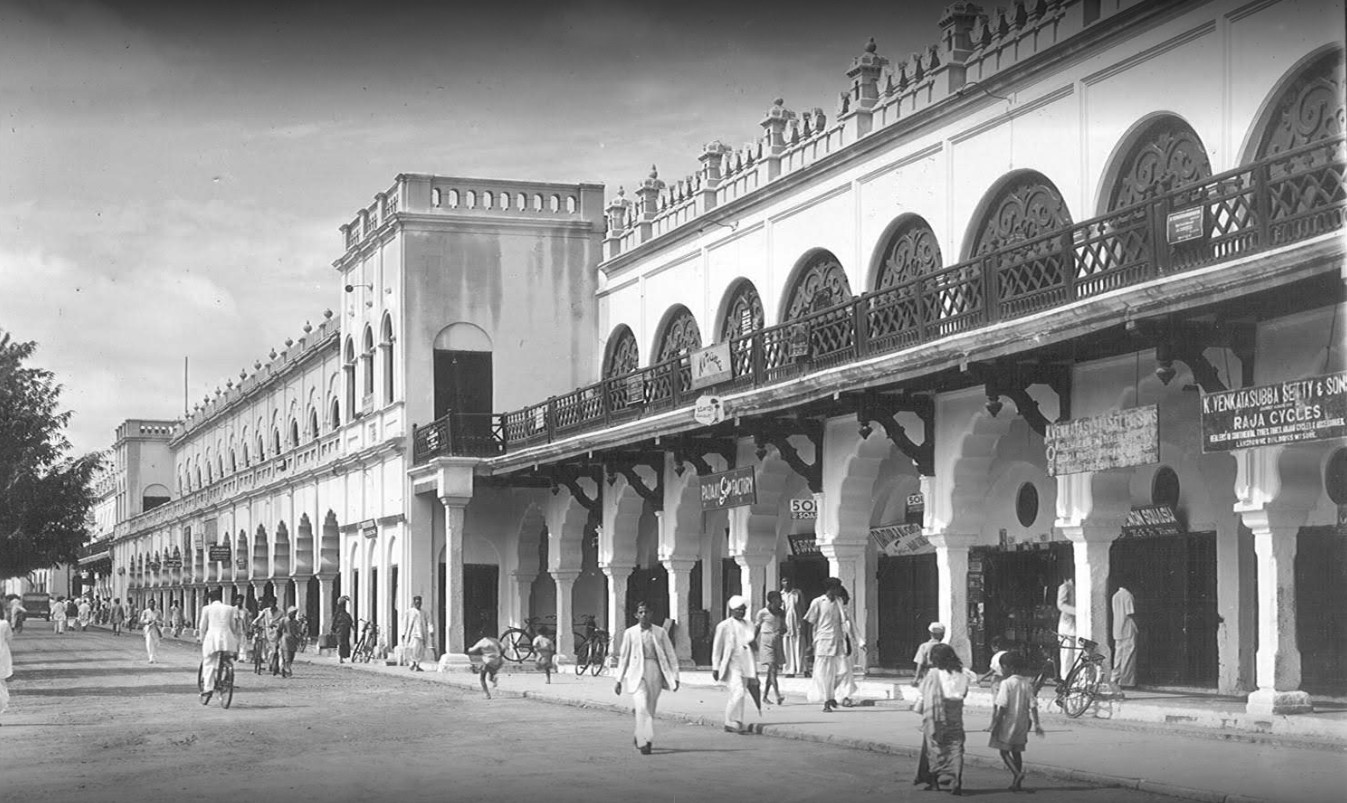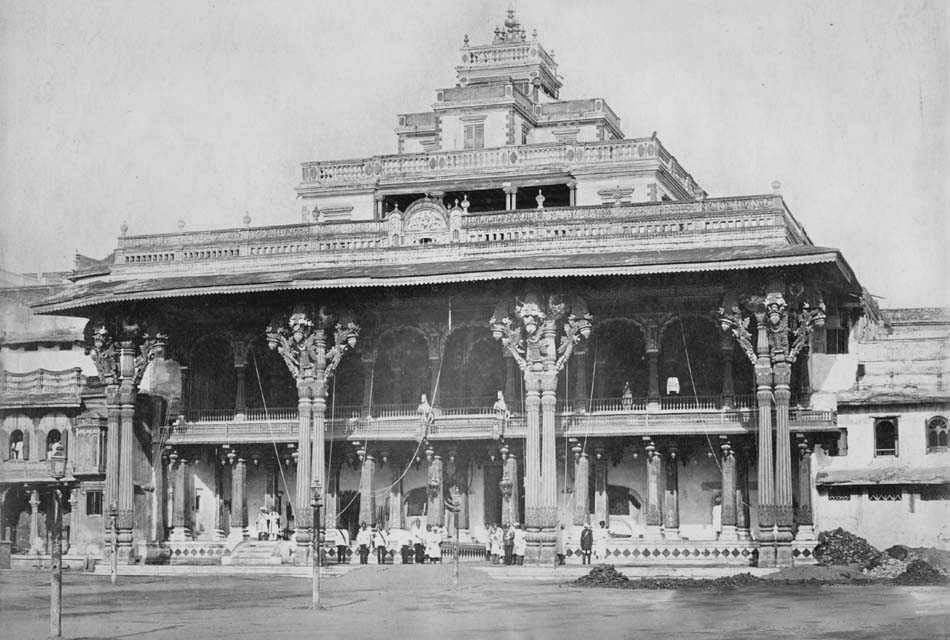
Mysuru Palace History
The current Mysuru Palace – the fourth to occupy this site – was designed by the British architect Henry Irwin after its predecessor was destroyed in a fire in 1897. The imposing building that stands today was completed in 1912, but it is believed that a Mysuru Palace was established as part of a wooden fortress, by the royal family of Mysuru, the Wodeyars, as early as the fourteenth century.
In 1638 the palace was struck by lightning and rebuilt by Kantirava Narasa Raja Wodeyar (1638 – 1659 AD), who extended the existing structures, adding new pavilions.
The glory of the new building was to prove short-lived. The death of Chikka Devaraja Wodeyar (1673 – 1704 AD) in the eighteenth century plunged the kingdom into a period of political instability.
During these turbulent times the Mysuru Palace slipped into a state of neglect culminating in its demolition in 1793 by Tipu Sultan, the son of Hyder Ali, a maverick general in the king’s army who rose to become the ruler of Mysuru.
In 1799, when upon the death of Tipu Sultan the five-year old Krishnaraja Wodeyar III (1794-1868) AD assumed the throne, the coronation ceremony took place under a marquee. One of king’s first tasks, on his accession, was to commission a new palace built in the Hindu architectural style and completed in 1803.
The hastily constructed palace soon fell into disrepair and in 1897 was razed to the ground by a fire at the wedding ceremony of princess Jayalakshmmanni.
The destiny of the Mysuru Palace now passed to Queen Regent Kempananjammanni Vanivilasa Sanndihana, who commissioned well-known British architect Henry Irwin to build a new palace that would be a tribute to the legacy of Mysuru and the Wodeyars.
Completed in 1912 and at a cost of Rs. 41,47,913 the result was the Mysuru Palace you see standing today. A masterpiece in Indo-Saracenic architecture, on par with great Mughal residences of the North and the stately colonial public buildings of the South.
Designed by the English Architect, Henry Irwin, the Mysuru Palace dominates the skyline of Mysuru. A three storied structure in the Indo-Saracenic style built between 1897-1912, the palace has beautifully designed square towers at cardinal points, covered with domes. The Durbar Hall with its ornate ceiling and sculpted pillars and the Kalyanamantapa (Marriage Pavilion) with its glazed tiled flooring and stained glass, domed ceiling are worth noting. Intricately carved doors, the golden howdah (elephant seat), paintings as well as the fabulous, jewel encrusted golden throne (displayed during Dasara) are amongst the palace’s other treasures. The walled palace complex houses the Residential Museum (incorporating some of the Palace’s living quarters),temples and shrines including the Shwetha Varahaswamy temple. The palace is illuminated on Sundays, Public Holidays as well as during the Dasara Celebrations when 97,000 electric bulbs are used to illuminate it.
THE ROYALS
Patrons of art and culture, fierce warriors, and astute administrators, the Wodeyars grew from provincial chieftains, to a mighty dynasty that would rule Mysuru for nearly six centuries.
The founding of the dynasty is veiled in the chivalrous legend of two princely brothers from Dwaraka, in the Northern State of Gujarat.
While on pilgrimage in Mysuru the two princes heard women lament the fate of the local Princess Devajammanni. The King of Mysuru had died and the Chieftain of Karagahalli, a neighboring province, was trying to marry the princess and acquire Mysuru by force.
Rising to the occasion the two brothers mobilized troops, killed the Karagahalli Chieftain and rescued the princess. The grateful princess married the elder of the two brothers, named Yaduraya, who became the first ruler of the Wodeyar dynasty.
It was Raja Wodeyar (1578-1617), the eight king of the Wodeyar dynasty, however, who transformed Mysuru from a feudal principality into a kingdom. Defeating the king of the declining Vijayanagar Empire, he shifted his capital from Mysuru to Srirangapatna. It was also during his reign that the famous Dasara festival was revived.
Ranadhira Kantirava Narasaraja Wodeyar (1638-1659) consolidated the kingdom won by his predecessor, thwarting two invasions by the powerful Bijapur Adilshahis. He also fortified Srirangapatna and Mysuru and began minting coins with his seals.
Chikka Devaraja Wodeyar (1673-1704), the next great Wodeyar, further expanded the kingdom. He also introduced land reforms and streamlined the administration. Following his death, a series of inept rulers plunged the kingdom into political instability.
By the mid eighteenth century, Mysuru was virtually ruled by Hyder Ali, a general in the army of Krishnaraja Wodeyar II (1734 – 1766), and then his son Tipu Sultan. Finally, following the death of Tipu Sultan in 1799 in a battle with the British, the five-year-old Prince Krishnaraja Wodeyar III [1799-1868] was installed on the throne of Mysuru.
It was under the reigns of Krishnaraja Wodeyar III [1799-1868] and his son Krishnaraja Wodeyar IV [1895- 1940], that the modern township of Mysuru was created. It was also during the reign of Krishnaraja Wodeyar IV that the Mysuru Palace was built, under the commission of his mother Maharani Kempananjammanni of Vanivilasa Sanndihana who served as Regent during his minority from 1895-1902.
After his death in 1940, Jayachamaraja Wodeyar became the 25th and last ruler of the Mysuru royal family. It is during this period that India won freedom and monarchy was abolished, closing a chapter in history and ending the era of the Mysuru Maharajas.






